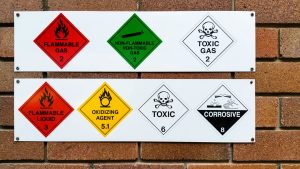In high-risk industries, such as chemical and manufacturing, stringent regulations are in place to prevent catastrophic incidents like explosions, fires, leaks and spills. These regulations fall under the safety management process, with Process Hazard Analysis (PHA) standing out as a crucial tool. The PHA is a vital component of any process safety management program. If it is not done correctly, it could cause fatalities, irreversible environmental damage and billions of dollars in losses.
PHA is not just a regulatory requirement; it’s a systematic approach designed to identify and mitigate potential hazards, ensuring a safer work environment and protecting surrounding communities. PHAs are more relevant than ever; a recent report by Coming Clean found that hazardous chemical accidents are occurring almost daily in the U.S., exposing workers and members of the public to dangerous toxins.
So, what exactly is a PHA and how should it be conducted? Below, we’ll dive into these aspects to give you a better understanding of how to use PHAs to help keep your workplace safe.
What is a Process Hazard Analysis?
Defined by OSHA as a “thorough, orderly, systematic approach for identifying, evaluating and controlling the hazards of processes involving highly hazardous chemicals,” a PHA aims to uncover potential causes and assess the consequences of hazardous chemical releases.
This proactive process empowers organizations to identify diverse risks, ranging from equipment failures to human errors and external factors like transportation accidents, power outages and extreme weather events. The emphasis is on preemptive risk management, enhancing safety measures, minimizing downtime and protecting the communities around them.
Imagine pinpointing potential equipment failures before they occur, foreseeing human errors and recognizing external threats like transportation accidents. PHAs offer this foresight, acting as a strategic shield against the unexpected, making workplaces safer and more resilient.
How is a Process Hazard Analysis conducted?
Conducting a PHA involves choosing from various methodologies tailored to factors like process length and complexity.
Regardless of which method is selected, it’s vital that organizations select a team of experts to lead the process. PHA teams should consist of engineers, operators, maintenance, supervisors and any other team members who are very familiar with the operational process being reviewed.
The key to an effective PHA lies not merely in rapid hazard listing but in selecting the right, structured method to uncover as many potential hazards as possible.
Common methods used to conduct a PHA include:
- Fault Tree Analysis: Delving into potential failed outcomes, working backward to identify underlying causes.
- What If Analysis: Engaging in structured brainstorming to envision operational process mishaps, from human errors to equipment failures.
- Hazard and Operability Study (HAZOP): Systematically evaluating industrial processes by breaking them into manageable steps.
- Hazard Identification (HAZID): Employing qualitative risk analysis in the early stages to ensure the process’ design accommodates hazardous scenarios and realistic safeguards.
- Failure Mode and Effects Analysis (FMEA): Assessing design failures by identifying potential failure modes and outlining outcomes for each.
How often should a Process Hazard Analysis be updated?
PHAs are not static documents. Regulations mandate updates and revalidation every five years, ensuring consistency with the current process. Employers must maintain a vigilant eye, fostering a culture of safety through periodic reviews and updates to keep pace with evolving risks.
By unraveling the intricacies of a PHA, organizations forge a path toward a safer, more resilient future, where potential hazards are identified, mitigated and transformed into opportunities for continuous improvement.
Check out our website for more information on Evotix360 Integrated EHS & Sustainability management solution.
This article was originally published by Evotix






